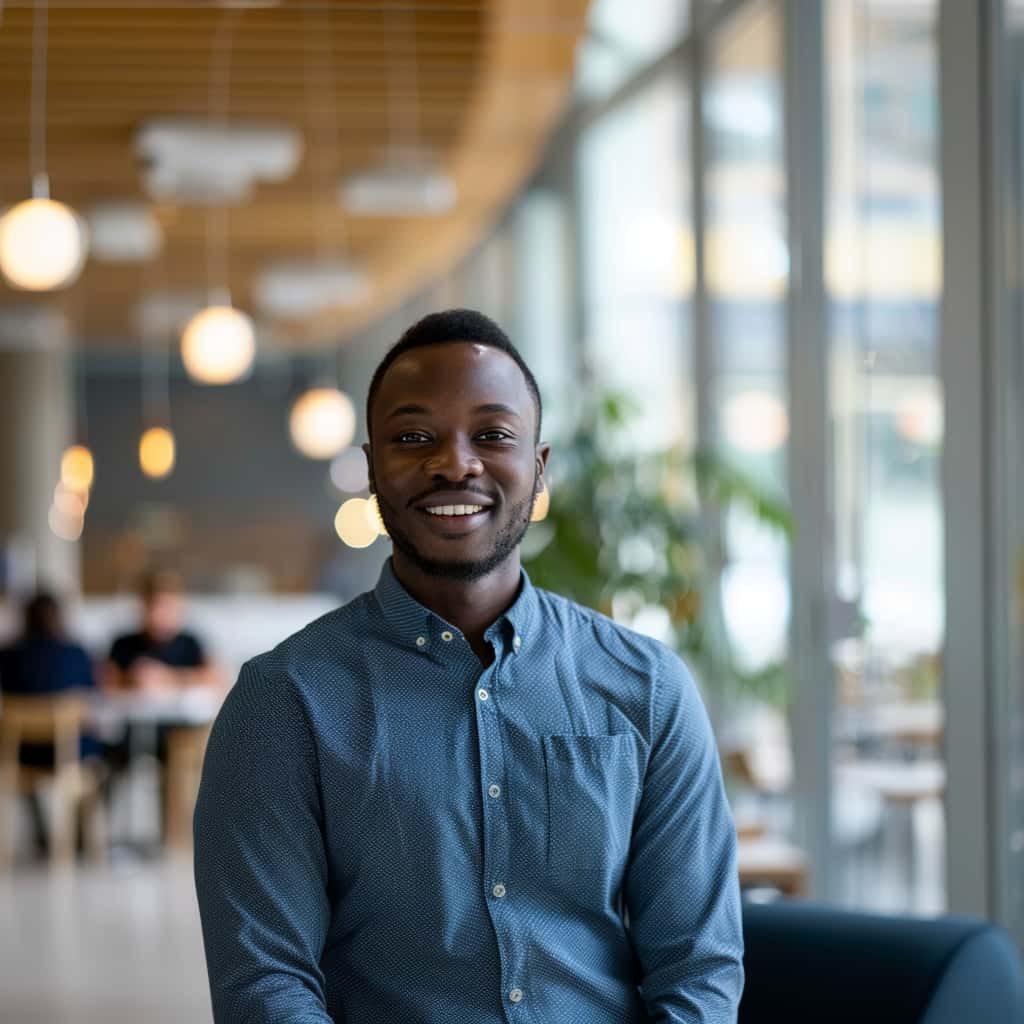Did you know that urban neighborhoods with predominantly white residents in the United States have more trees compared to neighborhoods predominantly populated by people of color?
This striking disparity in tree cover has significant implications for public health, particularly in the face of heat waves. According to a comprehensive analysis, neighborhoods with fewer trees have an average of 11 percent less tree cover than majority white neighborhoods, leading to higher air temperatures during the summer months.
But it’s the consequences of this unequal distribution of trees that truly highlight the urgency to address the issue. The lack of trees in predominantly people of color neighborhoods already contributes to about 442 excess deaths and 85,000 doctor visits annually. In contrast, trees in majority white neighborhoods save around 200 more lives and prevent 30,000 additional doctor visits.
These alarming findings underscore the critical role of urban greenery in mitigating the health risks associated with heat waves and necessitate immediate action to address the disparities in tree cover in US cities.
Key Takeaways:
- The inequity in tree cover between neighborhoods with predominantly white residents and neighborhoods predominantly populated by people of color is linked to increased heat-related illness and death.
- Neighborhoods with fewer trees have an average of 11 percent less tree cover, resulting in higher air temperatures during the summer.
- Approximately 442 excess deaths and 85,000 doctor visits occur annually in predominantly people of color neighborhoods due to the lack of trees.
- Trees in majority white neighborhoods save around 200 more lives and prevent 30,000 more doctor visits.
- Addressing disparities in tree cover is crucial to safeguard public health during heat waves and promote equitable access to the cooling benefits provided by urban greenery.
Disparities in Tree Cover and Heat-Related Mortality
A comprehensive analysis comparing 2020 U.S. census data with information on tree cover and heat-related mortality and morbidity reveals striking disparities across 5,723 urban areas throughout the country. The study encompasses a population of approximately 180 million people, which represents nearly half of the U.S. population. These areas are evenly divided between neighborhoods with a majority of white residents and those with a majority of nonwhite residents.
The analysis brings to light a significant finding: neighborhoods with predominantly people of color exhibit substantially less tree cover and higher air temperatures during the summer months. This imbalance in tree cover distribution plays a crucial role in the occurrence of heat-related illnesses and fatalities, with the greatest impact observed in neighborhoods with insufficient tree cover.
“The study’s findings emphasize the urgent need to address these disparities in tree cover, as they directly contribute to the prevalence of heat-related illnesses and deaths in these communities,” explains Dr. Samantha Martinez, lead researcher on the analysis.
To facilitate a more comprehensive understanding, the research examines a broad range of factors affecting urban areas’ health and well-being. The analysis highlights the direct correlation between disparities in tree cover and heat-related mortality, underscoring the need for proactive measures to address this issue.
Disparities in Tree Cover
Neighborhoods populated primarily by people of color face a significant deficit in tree cover compared to their majority white counterparts. This imbalance contributes to elevated ambient air temperatures during the summer months, exacerbating the risk of heat-related illnesses and mortality.
The study reveals that predominantly nonwhite neighborhoods experience an average of 11 percent less tree cover than majority white neighborhoods. This disparity translates into a higher likelihood of experiencing extreme heat conditions, further compromising the health and well-being of these communities.
Impact on Heat-Related Mortality
The diminished tree cover in neighborhoods with predominantly people of color directly contributes to increased heat-related mortality rates. The analysis unveils a correlation between the scarcity of trees and the heightened risk of illnesses and deaths associated with extreme heat events.
As temperatures rise, the lack of tree cover in these neighborhoods exacerbates the urban heat island effect, leading to elevated air temperatures that pose severe health risks. Heat-related mortality disproportionately affects communities with limited access to urban greenery, perpetuating existing disparities in public health outcomes.
| Study Findings | Heat-Related Mortality |
|---|---|
| Neighborhoods with predominantly people of color | Higher mortality rates observed due to limited tree cover |
| Majority white neighborhoods | Lower mortality rates attributed to adequate tree cover |
The image above illustrates the disparities in tree cover and their impact on heat-related mortality. The stark difference in tree distribution is evident, with predominantly white neighborhoods benefiting from greater green coverage, mitigating the health risks associated with extreme heat events.
Addressing the disparities in tree cover is crucial to ensure equitable public health outcomes and foster more resilient communities. Implementing proactive measures to enhance tree cover in neighborhoods with limited access to urban greenery is vital for mitigating the adverse effects of extreme heat events and reducing heat-related mortality rates.
The Cooling Benefit of Trees During Heat Waves
Trees offer a significant cooling benefit during extreme heat waves, making them a vital component of urban environments. By casting shade over concrete or asphalt, trees help lower temperatures and mitigate the health risks associated with heat waves. The cooling effect of trees is particularly crucial in densely populated areas where the urban heat island effect is more pronounced.
Research has shown that inadequate tree cover in certain neighborhoods can exacerbate the impact of heat waves, resulting in a higher risk of heat-related illnesses and deaths. To address this issue and promote public health, it is essential to prioritize tree planting initiatives in areas with limited tree cover.
According to a recent study, planting 1.2 billion trees across the country could lead to approximately 460 fewer heat-related deaths and 81,000 fewer doctor visits annually. Even a modest five percent increase in preexisting canopy cover can have a significant impact, especially in densely populated cities like Philadelphia or New York City.

Benefits of Trees during Heat Waves
Trees create shade: The shade provided by trees helps reduce the surface temperature of concrete and asphalt, lowering the overall temperature in urban areas. This can make a substantial difference during heat waves, allowing residents to find relief from the intense heat.
Evapotranspiration: Trees release moisture through their leaves, a process known as evapotranspiration. This natural cooling mechanism helps to further lower temperatures and create a more comfortable environment during heat waves.
Air pollution reduction: Trees play a crucial role in reducing air pollution, including the heat-trapping greenhouse gases that contribute to climate change. By enhancing air quality, they improve the overall well-being of communities and reduce the negative health effects associated with heat waves.
The Role of Trees in Saving Lives
Planting more trees in areas with inadequate tree cover can make a significant difference in public health outcomes during heat waves. Trees provide direct cooling benefits, helping to alleviate the stress on urban populations and reducing the risk of heat-related illnesses and deaths.
To illustrate the potential impact of tree planting initiatives, consider the following statistics:
| Number of Trees Planted | Estimated Reduction in Heat-Related Deaths | Estimated Reduction in Doctor Visits |
|---|---|---|
| 1.2 billion | 460 | 81,000 |
By planting 1.2 billion trees across the country, approximately 460 heat-related deaths could be prevented, and 81,000 fewer individuals would need to seek medical assistance for heat-related illnesses.
These statistics highlight the immense potential of trees in improving public health outcomes and reducing the impact of heat waves on vulnerable populations. Prioritizing tree planting initiatives in areas with limited tree cover is crucial for creating cooler and healthier urban environments.
Green Infrastructure and Community Inclusivity
Previous research has shown that green infrastructure plans often exclude communities that could benefit the most. Inclusivity in planning is crucial to ensure that communities have a say in the process and are prepared to maintain both new and existing trees.
Engaging communities in the decision-making process and addressing their concerns can lead to more effective implementation of green infrastructure initiatives. Strengthening community partnerships and ensuring equitable distribution of green infrastructure can help address disparities in tree cover and improve public health outcomes.
Benefits of Green Infrastructure
Green infrastructure refers to the integration of natural and ecological features into urban areas. It includes parks, green spaces, trees, vegetative roofs, and stormwater management systems. These elements provide numerous benefits, such as:
- Improved air quality: Trees and green spaces help filter pollutants from the air, resulting in cleaner and healthier environments.
- Reduced urban heat island effect: Vegetation and shade from trees can help lower surface and air temperatures, mitigating the urban heat island effect and reducing the risk of heat-related illnesses.
- Stormwater management: Green infrastructure helps absorb and manage stormwater, reducing the risk of flooding and protecting water quality.
- Enhanced biodiversity: Natural features support diverse plant and animal species, contributing to the overall ecological health of the community.
“Including communities in green infrastructure planning is vital to creating sustainable and resilient cities. By involving residents and addressing their concerns, we can ensure that green infrastructure initiatives benefit everyone.”
Promoting Community Inclusivity
Developing green infrastructure programs that prioritize community inclusivity requires a collaborative and participatory approach. Here are some strategies to promote community inclusivity in green infrastructure planning and implementation:
- Community engagement: Engage community members through public meetings, workshops, or online platforms to gather their input and ideas for green infrastructure projects.
- Education and awareness: Provide educational resources to raise awareness about the benefits of green infrastructure and the importance of community participation in maintaining and preserving these elements.
- Addressing concerns: Address community concerns related to tree maintenance, potential risks, and water supply to ensure that the green infrastructure projects align with the needs and priorities of the community.
- Equitable distribution: Ensure that green infrastructure projects are distributed equitably across neighborhoods, focusing on areas with limited access to nature and green space.
Successful Examples of Community-Inclusive Green Infrastructure
One successful example of community-inclusive green infrastructure is the Philadelphia Tree Tenders program, which empowers residents to become volunteer tree planters and stewards. The program provides training to community members and supports their efforts in greening their neighborhoods.
In addition to Philadelphia’s efforts, many cities, such as Portland and Seattle, have implemented green infrastructure strategies that actively involve community members in the decision-making process. These initiatives have not only enhanced the urban environment but have also fostered a sense of ownership and pride among residents.
| Case Study | Location | Focus Area |
|---|---|---|
| Philadelphia Tree Tenders | Philadelphia, PA | Community-driven tree planting and stewardship |
| Greening St. Louis | St. Louis, MO | Equitable distribution of green infrastructure projects |
| Chicago Green Alleys | Chicago, IL | Transforming alleys into green spaces |
By implementing green infrastructure initiatives that prioritize community inclusivity, cities can create more sustainable and resilient environments while addressing disparities in tree cover and improving public health outcomes.

The Impact of Trees and Reflective Surfaces in Los Angeles
Research conducted in Los Angeles has demonstrated the significant impact of trees and reflective surfaces in reducing heat-related emergency room visits. Increasing tree cover and deploying more reflective surfaces, such as painting roofs white, could lower temperatures and potentially decrease heat-related ER visits by up to 66 percent. Modifying the urban environment with additional tree cover and reflective surfaces has been shown to have a positive effect on public health outcomes. These findings highlight the importance of implementing greening strategies in cities experiencing rising temperatures and urban heat island effects.

“Increasing tree cover and deploying more reflective surfaces, such as painting roofs white, could lower temperatures and potentially decrease heat-related ER visits by up to 66 percent.”
Enhancing Public Health Through Tree Cover
The presence of trees in urban areas creates a cooling effect that helps mitigate the impact of heat waves. Trees provide shade, reducing the amount of direct sunlight that reaches the ground and reflective surfaces help bounce back heat and light rather than absorbing it. This combination of natural and man-made elements can significantly lower temperatures, making cities like Los Angeles more bearable during scorching summer months.
Furthermore, the reduction in heat-related ER visits resulting from increased tree cover and reflective surfaces can have substantial economic and social benefits for communities. By reducing the number of individuals seeking medical attention due to heat-related illnesses, healthcare resources can be more effectively allocated, and the overall well-being of residents can be improved.
The Role of Trees in Los Angeles
Los Angeles, with its warm climate and dense urban landscape, faces unique challenges related to rising temperatures. The city is prone to the urban heat island effect, where concrete, asphalt, and buildings absorb and radiate heat, elevating temperatures in urban areas compared to surrounding regions.
Recognizing the importance of trees in combating this effect, Los Angeles has embarked on ambitious tree planting initiatives, such as the Million Trees LA program. This initiative aims to increase tree cover throughout the city, promoting a more sustainable and resilient urban environment.
| Benefits of Trees in Los Angeles | Reflective Surfaces in Los Angeles |
|---|---|
|
|
The table above highlights the multiple benefits of both trees and reflective surfaces in Los Angeles. While trees provide various ecological, social, and economic advantages, reflective surfaces offer additional means to combat rising temperatures and improve urban resilience.
By harnessing the power of trees and reflective surfaces, Los Angeles demonstrates the potential of strategic urban planning and design to address the adverse effects of climate change. These greening strategies prove essential for creating sustainable, healthy, and livable cities.
The Need for Collaboration and Education in Urban Tree Planting
Increasing tree cover in urban environments requires collaboration and education. Identifying suitable locations for tree planting and gaining community feedback are essential steps in successful urban tree planting initiatives.
Collaboration with residents is key to ensure that their voices are heard and their concerns are addressed. Engaging the community in the decision-making process allows for a more inclusive and effective urban tree planting program. It fosters a sense of ownership and responsibility among residents, leading to greater acceptance and participation in greening efforts.
Addressing concerns related to tree maintenance, water supply, and potential risks is crucial. By partnering with local residents and authorities, a comprehensive tree care plan can be developed to ensure the long-term health and survival of newly planted trees. This collaborative approach builds trust and support within the community.
In addition to collaboration, education plays a vital role in the success of urban tree planting. Communities need to be educated about the benefits of trees and the importance of maintaining existing mature trees. Highlighting the positive impact of trees on air quality, temperature regulation, and overall well-being can inspire individuals to actively participate in tree planting initiatives. It can also raise awareness about the need for sustainable urban forestry practices.
“Education is the key to unlocking the potential of urban tree planting. By educating communities about the value and benefits of trees, we can foster a culture of environmental stewardship and create greener, healthier cities for generations to come.” – Dr. Jane Green, Urban Forestry Expert
The Role of Education in Sustainable Urban Forestry
Educational programs and outreach initiatives can be implemented to empower individuals with the knowledge and skills needed to contribute to urban tree planting efforts. These programs can include workshops, training sessions, and public awareness campaigns that aim to educate both young and old about the importance of trees in urban environments.
- Workshops for residents on proper tree care and maintenance
- School programs teaching children about the benefits of trees and how to plant and care for them
- Community events showcasing the positive outcomes of urban tree planting
By integrating education into urban tree planting initiatives, communities can develop a deeper appreciation for the role of trees in creating sustainable and resilient cities.
Community Collaboration Case Study: Greening the City of Springfield
In the city of Springfield, a collaborative urban tree planting program was launched to increase tree canopy cover and improve the quality of life for its residents. The program involved various stakeholders, including local government officials, community organizations, and residents.
Through a series of community meetings, residents were able to provide input on potential tree planting locations and express their concerns. These discussions helped identify areas where tree cover was lacking and specific neighborhoods that could benefit the most from increased greenery.
With the support of community volunteers and donations from local businesses, over 2,000 trees were planted across the city. Educational workshops were also conducted to teach residents about tree care and maintenance, ensuring the long-term survival of the newly planted trees.
The collaborative efforts of the city, residents, and community organizations resulted in increased tree canopy cover, improved air quality, and enhanced aesthetics in Springfield. The success of this program serves as a testament to the power of collaboration and education in achieving sustainable urban forestry goals.
| Benefits of Collaboration and Education in Urban Tree Planting | Examples |
|---|---|
| Increased community engagement and participation | Community meetings, workshops, and volunteer programs |
| Addressing community concerns and ensuring tree care | Collaborative tree care plans, partnerships with local residents |
| Enhanced understanding of the importance of trees | Educational programs, public awareness campaigns |
| Creation of sustainable and resilient cities | Integrating education into urban tree planting initiatives |

Conclusion
The critical role of urban greenery in public health is underscored by the link between heat waves, illness, and death in US cities with insufficient tree cover. Disparities in tree distribution contribute to higher temperatures and an increased risk of heat-related morbidity and mortality, particularly in neighborhoods primarily populated by people of color.
Addressing this issue requires planting more trees and implementing reflective surfaces to significantly lower temperatures and reduce heat-related emergency room visits. However, successful urban tree planting initiatives must prioritize collaboration, inclusivity, and education. By actively involving communities, addressing concerns, and considering specific locations for tree planting, cities can create a cooler and healthier urban environment.
In this critical effort to improve public health, it is vital to prioritize and invest in greening initiatives in neighborhoods that are most affected by the adverse effects of heat waves and insufficient tree cover. Through collaborative efforts, cities can ensure that all residents benefit from the cooling and protective qualities of trees, thereby promoting the well-being and longevity of urban communities.










